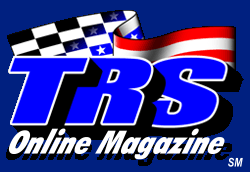 |
|
||||||||||
|
|
|
By Scott B. History: In 1998, Ford changed the Ranger front suspension to a SLA style – identical to that found on Gen II Explorers (1995+) and Aerostar vans from 1989-ish. Identical except for one minor difference – the Ranger had locking hubs. The factory hubs were called PVM – Pulse Vacuum Modulation, I believe. As the name implies, the hub is activated (locked) from engine vacuum. While this was an interesting idea, the design proved problematic and prone to failure. As of mid-year 2000, Ford did away with the hubs, and switched the Rangers to the same live axle setup that is found on Explorers and Aerostars. The locking hub design was also used in other parts of the world, and one company, AVM of Brazil, designed and manufactured stronger replacement hubs. These hubs did away with the vacuum actuation, and utilized the old “hand-turned knob” design. Purpose: This article explains how to take advantage of Ford’s parts interchangeability and convert a live axle to a manual-locking hub axle. Parts: NOTE: Parts reference a 1998 Ford Ranger, 4WD Unit bearings – 2 required, left and right, with or without ABS
(make sure you use quality Timken bearings)
Description: Support front of truck on jackstands, remove front wheels, brake calipers and mounting brackets, dust shield and rotors. The following steps are for one side of the truck (photos show left side.) Right side similar. Disconnect ABS wiring connector, if applicable. Remove axle locknut (inside center of hub)
Using a hub puller, start pushing axle out of hub. Do not push axle all the way out – all you want to do is break the fit. (See photo)
Disconnect knuckle from upper ball joint. Support lower A-arm with a jack, as it has the load of the torsion bar on it. Use hub puller to push axle out of the hub. (See photo)
Remove CV axle. The inboard end locks into the differential, so a short, quick pull is required. Alternatively, a pry bar could be gently used.
Remove the 3 bolts that attach the unit bearing. (Impact driver shown, but not needed.) Remove unit bearing
Install seal in back of knuckle. Ensure surface of seal is below surface of knuckle. (See photo)
Replace axle seal on the side of the differential, if necessary.
Install new CV axle. A strong, quick push will be required to insert and secure axle in differential. Work outside end into new seal in knuckle. (See photo)
Install new unit bearing, ensuring the ABS wire is routed so it will not be pinched by the brake dust shield. Make sure new, unused bolts are used to fasten the unit bearing to the knuckle. (See photo)
Reattach knuckle to upper ball joint. Install lock ring in groove in axle. (See photo)
Wipe a small amount of grease on the inner splines of the unit bearing hub and the outer splines of the axle shaft. Press locking hub into unit bearing, making sure the splines engage on both the axle and the bearing. Install dust shield, rotor, caliper mounting bracket, caliper and ABS wire. (See photo)
Lastly, have a front end alignment done - pulling it apart like this probably did not change anything, but it never hurts to make sure. The end result!
Notes from various readers: Be sure the seal tightens the snap ring against the inner surface of the unit bearing. There is a specific depth that the seal needs to be at. If not, there will be no seal made with the CV. There should be no free play at the knuckle end, any play should be controlled and feel as though you are pulling against a seal. The small roller bearing that the CV rides on is serviceable. 80k is the interval but 20-30k in severe conditions can't hurt. The AVM hubs are not as strong as the live axle setup. One thing I do not like about the AVMs are the way they mount - the body is plastic, and it just pushes onto the hub. It looks like a weak link to me. I had the AVM hub fly off when I hit a big Jersey pot hole.. A couple times before I figured out a fix. I bought metal zip ties like you would use on a replacement Cv boot and zip tied it around the outside. Easy fix.
|
|
|